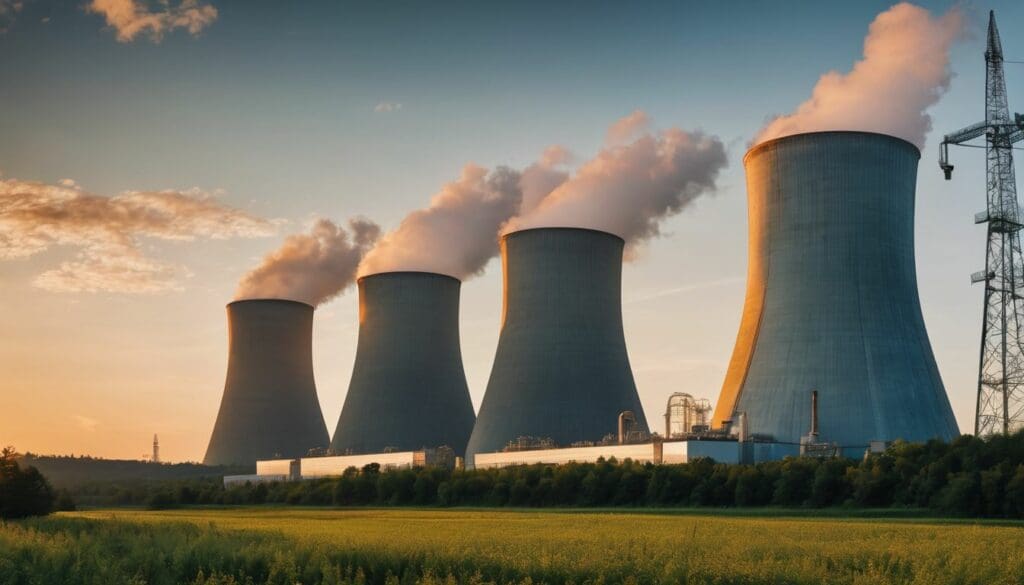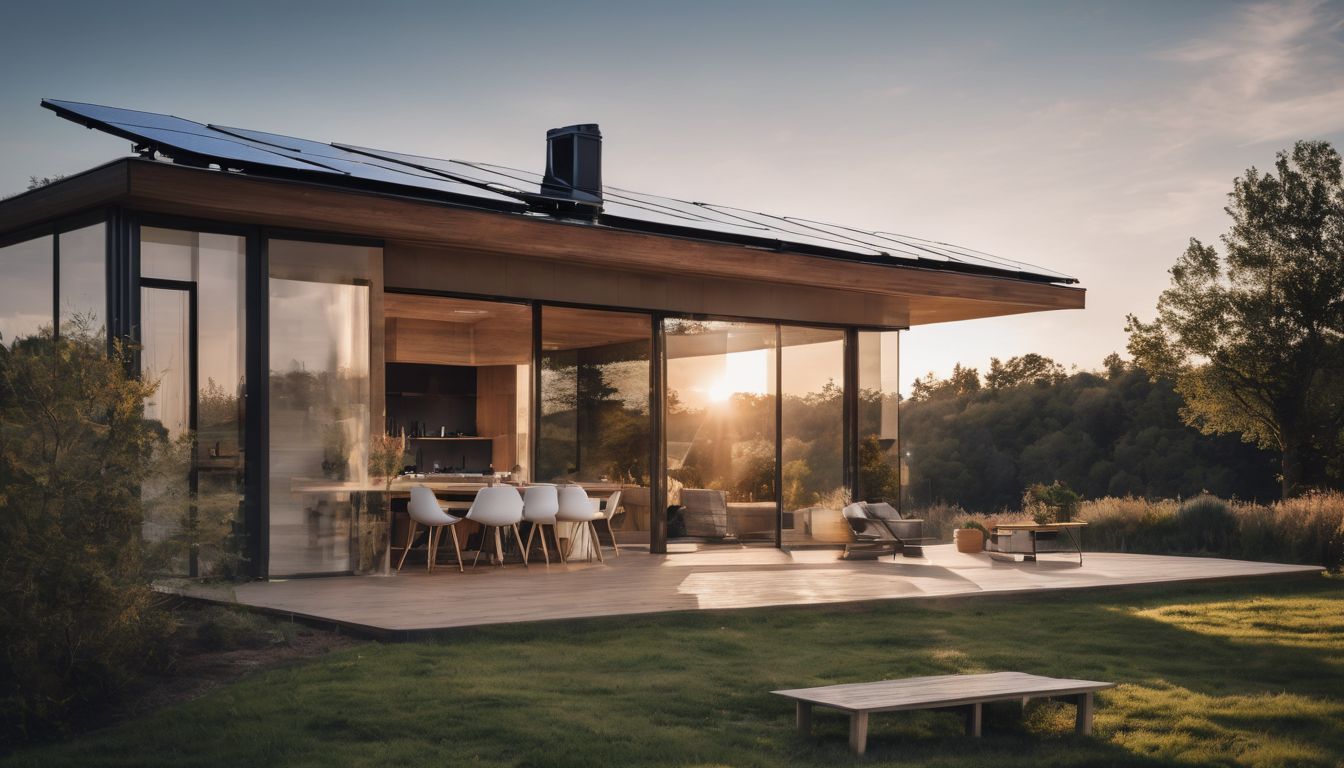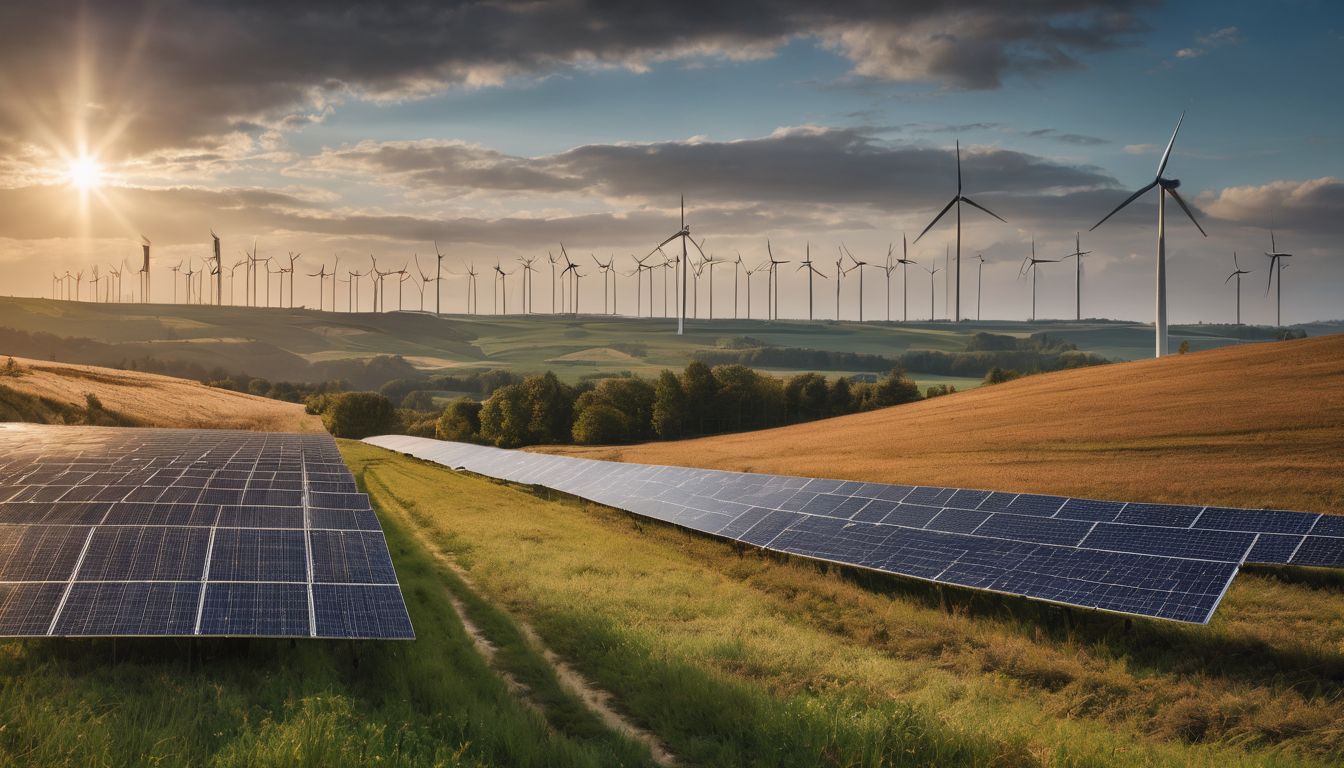Are you curious about the benefits and drawbacks of nuclear energy? It’s important to understand both sides of the coin when it comes to this controversial power source. In this article, we will explore the advantages and disadvantages of nuclear energy in a simple and straightforward way. Get ready to discover the truth about nuclear power!
Key Takeaways
- Nuclear energy is a low – carbon power source with high electricity output and small land use, making it advantageous for climate change efforts.
- Concerns about nuclear power include the long – term management of radioactive waste, the possibility of severe accidents, and high initial investment costs.
- Technological advancements are improving safety and efficiency in nuclear power; developments in fusion energy could further transform its role in clean energy transitions.
- While uranium supply is finite, research into alternative fuels and better recycling methods could extend the viability of nuclear energy.
- Government policies shape the development of nuclear energy through regulations that ensure safety and encourage investment in newer technologies.
Explanation of nuclear energy
Nuclear energy is a powerful source of electricity that comes from splitting atoms in a process known as nuclear fission. Inside a nuclear reactor, tiny particles called neutrons collide with the nucleus of an atom, typically uranium or plutonium.
This collision causes the atom to split and release heat. The heat generated is then used to create steam which spins turbines to produce electricity without emitting greenhouse gases.
This form of energy stands out due to its high power output and ability to provide stable base load energy for consistent electricity flow. Using atomic energy significantly reduces pollution compared to fossil fuels, making it a carbon-free option in battling climate change.
While harnessing this potent source, safety measures are critical since radiation from nuclear reactors can be dangerous if not managed properly. Advances in technology aim at making nuclear power plants even safer and more efficient as we seek sustainable ways to power our world.
Advantages of Nuclear Energy
Nuclear energy is a carbon-free electricity source with a small land footprint, high power output, and low cost of operation. It is also a reliable energy source that provides stable base load energy.
Carbon-free electricity
Generating electricity through nuclear power offers significant environmental benefits. As the world grapples with climate change, carbon-free energy solutions have become vital. Nuclear energy stands out by providing large amounts of electricity without emitting greenhouse gases during operation.
This makes it a key player in efforts to transition to green energy and reduce pollution.
Harnessing the power of atoms also combats our reliance on fossil fuels. Using uranium as fuel, nuclear reactors produce heat that is then converted into high-voltage electricity, bypassing the burning of coal or gas which releases harmful emissions.
With proper management, technology advances could further enhance these positives, leading us into discussing the small land footprint required for nuclear plants compared to other energy sources.
Small land footprint
Nuclear energy offers a significant advantage in terms of its small land footprint. Unlike many other large-scale power generation methods, nuclear power stations require relatively little space to produce vast amounts of electricity.
This means that compared to renewable sources like wind and solar farms, nuclear power can provide substantial energy outputs while using only a fraction of the land area, making it an efficient option for densely populated regions or where land availability is limited.
Furthermore, the compact nature of nuclear facilities helps in minimising their impact on natural habitats and ecosystems. By concentrating energy production within a smaller area, nuclear power contributes towards conserving valuable land resources and protecting wildlife habitats.
High power output
Nuclear energy delivers high power output, generating large amounts of electricity to meet the demands of modern society. This is essential for providing a consistent and reliable energy supply, especially during peak times when electricity usage is at its highest.
The significant power output also makes nuclear energy a crucial contributor to meeting the growing global demand for clean and sustainable electricity.
Furthermore, it’s important to note that nuclear power has been proven as an effective way to generate vast amounts of low-carbon electricity efficiently, making it an attractive option in the pursuit of reducing greenhouse gas emissions and combating climate change.
Reliable energy source
With high power output comes the benefit of nuclear energy as a reliable source. This means consistent electricity generation that can meet the demands of large populations without fluctuations, providing stability to power grids and ensuring continuous supply.
This reliability is particularly crucial in supporting industrial operations, healthcare facilities, and communities dependent on uninterrupted energy access. The attributes contribute to making nuclear energy an essential component of achieving sustainability goals through dependable clean power sources.
Low cost of operation
With its reliability as a stable energy source, nuclear power offers the additional benefit of being cost-effective to operate. The low cost of operation makes it an attractive option for providing consistent electricity without incurring high ongoing expenses.
This advantage plays a crucial role in making nuclear energy a competitive and sustainable solution for meeting the growing demand for carbon-free electricity.
The relatively affordable operational expenses of nuclear power contribute to its appeal as an environmentally friendly and efficient energy source. This factor supports its viability in the transition towards cleaner and more sustainable forms of power generation, aligning with the goals and concerns of environmentally conscious individuals focused on conservation and environmental protection.
Stable base load energy
Nuclear energy provides a stable base load of power, ensuring a consistent and reliable electricity supply. This is essential for meeting the demands of modern society while reducing our carbon footprint.
With its high power output and low cost of operation, nuclear energy presents itself as a dependable source of clean electricity without relying on fossil fuels.
Moreover, the stable nature of nuclear energy allows it to complement intermittent renewable sources like solar and wind power, providing a balanced and resilient energy mix. As we strive towards a more sustainable future, having a stable base load from nuclear energy can significantly contribute to reducing greenhouse gas emissions and combating climate change.
Disadvantages of Nuclear Energy
The limited supply of uranium, high upfront costs, production of nuclear waste, potential for catastrophic malfunctions, and environmental concerns are important factors to consider when weighing the drawbacks of nuclear energy.
Interested in learning more about the pros and cons? Keep reading!
Limited supply of uranium
Uranium, the fuel for nuclear reactors, has a limited supply on Earth. This finite resource raises concerns about its long-term availability to meet the growing demand for clean energy.
The scarcity of uranium can impact the sustainability and scalability of nuclear power as a reliable source of carbon-free electricity. As advancements in technology continue, there is an ongoing need to explore alternative fuel sources or innovative approaches to ensure a sustainable future for nuclear energy.
High upfront costs
Nuclear energy plants require significant initial investment. The construction of nuclear reactors involves substantial expenses, including specialised materials and skilled labour.
Building these facilities also demands a lengthy permitting process and rigorous safety regulations, adding to the cost. Moreover, the expense of decommissioning old nuclear plants further contributes to high upfront costs.
The considerable financial commitment required for nuclear power projects poses challenges in attracting private investors. Without government support or subsidies, funding such large-scale ventures becomes difficult.
Production of nuclear waste
Nuclear power plants generate radioactive waste that needs careful management. This waste, made up of used fuel rods and other by-products, requires safe storage for thousands of years to prevent environmental contamination.
Proper disposal methods are a crucial consideration in evaluating the overall impact of nuclear energy on the environment and public health.
Managing nuclear waste responsibly is essential to safeguarding our planet’s future. Understanding its implications is vital for making informed decisions about our energy sources.
Potential for catastrophic malfunctions
Nuclear power plants have the potential for catastrophic malfunctions, which can lead to serious environmental and health consequences. This risk is associated with the possibility of reactor meltdowns or other incidents that release harmful radiation into the surrounding area.
These malfunctions can result in long-term damage to ecosystems and pose a threat to human safety. Safety measures and strict regulations are essential in mitigating these risks, as well as continuous monitoring and maintenance of nuclear facilities.
To prevent catastrophic malfunctions, stringent safety protocols must be enforced at all stages of nuclear energy production, from uranium mining to waste disposal. The industry should prioritise transparency and collaboration in sharing best practices for preventing accidents and ensuring public safety.
Environmental concerns
With the potential for catastrophic malfunctions come pressing environmental concerns. The main worry is the risk of radioactive material leaks, which could have a long-lasting impact on ecosystems and human health.
Another issue is the disposal of nuclear waste, as it can remain hazardous for thousands of years, posing serious challenges for secure storage and safeguarding against accidental release.
Moreover, there are apprehensions about the energy-intensive nature of mining and processing uranium, which contributes to greenhouse gas emissions. Additionally, water usage in cooling reactors affects local ecosystems and freshwater supplies.
The Debate on Nuclear Energy
Opinions on the use of nuclear energy vary widely, with some advocating for its continued use as a clean and reliable energy source while others express concerns about safety and environmental impact.
To learn more about the ongoing debate on nuclear energy, continue reading our blog.
Different opinions on its use
Opinions on the use of nuclear energy vary widely. Some advocate for its expansion as a reliable, low-carbon energy source that can help reduce greenhouse gas emissions and combat climate change.
Others express concerns about the potential for catastrophic accidents, the long-term storage of radioactive waste, and environmental impacts. This debate underscores the complex considerations involved in shaping energy policy and regulations.
– Government policies and regulations play a crucial role in shaping the trajectory of nuclear energy development and addressing public concerns.
Government policies and regulations
While there are varying opinions on the use of nuclear energy, government policies and regulations play a crucial role in overseeing its safety and environmental impact. Stringent guidelines dictate the operation of nuclear power plants, ensuring that they adhere to strict safety measures and waste management protocols.
Additionally, governments often provide incentives or subsidies for the development and implementation of advanced nuclear technologies that aim to enhance efficiency and reduce environmental risks.
Furthermore, regulatory bodies continuously monitor compliance with these policies to safeguard public health and the environment.
Amidst discussions about the benefits and drawbacks of nuclear energy, it’s essential for environmentally conscious individuals to stay informed about how government policies and regulations shape its usage.
Comparisons to other energy sources
Nuclear energy stands out as a distinct option when compared to traditional and renewable energy sources. Here’s a quick comparison:
| Energy Source | Environmental Impact | Energy Output | Reliability | Cost (Upfront and Operational) |
|---|---|---|---|---|
| Nuclear | Low emissions, long-term waste storage issues | Very high | High (stable base load) | High upfront, low operational |
| Coal | High emissions, significant pollutants | High | High | Low upfront, higher operational due to fuel and emissions |
| Natural Gas | Lower emissions than coal, methane leakage | High | High (but can be variable) | Medium upfront, variable operational |
| Solar | Minimal emissions, land use for large scale | Variable (dependent on sunlight) | Low (intermittent) | Medium to high upfront, very low operational |
| Wind | Minimal emissions, visual and land impact | Variable (dependent on wind) | Low (intermittent) | Medium to high upfront, very low operational |
| Hydropower | Minimal emissions, ecosystem disruption | High (where available) | High | Very high upfront, low operational |
| Biomass | Variable emissions, land use for crops | Medium | Medium (can be constant with supplies) | Low to medium upfront, medium operational |
The Future of Nuclear Energy
Advances in technology and potential for fusion power are driving the future of nuclear energy, making it a key player in the clean energy transition.
Advances in technology
Nuclear technology continues to advance, offering solutions to some of its longstanding challenges. Innovations in reactor design and fuel technologies aim to improve safety, reduce waste production, and enhance efficiency.
Additionally, advancements in nuclear fusion research hold promise for an almost limitless and clean energy source. These technological developments offer hope for addressing the concerns surrounding nuclear energy and its role in the clean energy transition.
Moving forward with nuclear energy requires careful consideration of both its benefits and drawbacks. Research into advanced technologies can help mitigate the disadvantages associated with nuclear power while maximising its potential as a reliable and low-carbon energy source.
This is crucial amidst increasing global efforts to combat climate change through sustainable energy solutions.
Potential for fusion power
As technology continues to advance, the potential for fusion power is becoming an increasingly promising aspect of nuclear energy. Fusion power holds the promise of providing a virtually limitless and highly efficient source of clean energy.
Unlike traditional nuclear fission reactors, which generate energy by splitting atoms, fusion reactors harness the power of combining atoms at incredibly high temperatures. This process produces minimal nuclear waste and does not pose the same risk of catastrophic malfunctions as fission reactors.
As developments in fusion technology progress, it has the potential to revolutionise the way we produce electricity, offering a reliable and sustainable solution to meet our growing energy needs without contributing to carbon emissions or pollution.
In recent years, research into fusion power has gained momentum with numerous projects around the world making significant strides towards achieving controlled fusion reactions that can be harnessed for practical energy generation purposes.
Role in the clean energy transition
Potential for fusion power has opened up new possibilities for nuclear energy in the clean energy transition. This promising technology could provide a sustainable, carbon-free energy source that is safe and reliable.
As governments and industries seek to reduce reliance on fossil fuels, nuclear energy’s potential to offer continuous power generation without greenhouse gas emissions positions it as a crucial player in the transition to cleaner energy sources.
Advances in technology have highlighted the role of nuclear power in meeting climate change targets. The development of next-generation reactors and innovations in waste management and safety measures are contributing to making nuclear energy an integral part of the global push towards sustainability.
Conclusion
In summary, nuclear energy offers carbon-free electricity production with a small land footprint. Its high power output and reliable source make it a stable base load energy option.
However, the limited supply of uranium, high upfront costs, and concerns about potential catastrophic malfunctions present significant drawbacks. As the debate continues on its use and future advancements in technology emerge, nuclear energy will likely play a pivotal role in the clean energy transition.
FAQs
1. What are the benefits of nuclear energy?
The benefits of nuclear power include being carbon-free and pollution-free, providing a significant advantage in reducing greenhouse gas emissions.
2. Can you list some drawbacks of using nuclear energy?
Among the drawbacks of nuclear power are the potential risks it poses, including radiation hazards and challenges related to waste disposal.
3. How does nuclear energy compare with other forms of energy?
Nuclear technology has advantages and disadvantages; while it offers a reliable source of pollution-free electricity, the cons involve high costs and safety concerns.
4. Are there any environmental pros to using nuclear power?
Yes, one major environmental pro is that nuclear energy is carbon-free, which means it doesn’t contribute to air pollution or global warming during operation.
5. What should someone consider when looking at the positives and negatives of nuclear power?
When evaluating the positives and negatives of this type of energy source, one should weigh its reliability and clean electricity benefits against its potential safety issues and long-term waste management.





